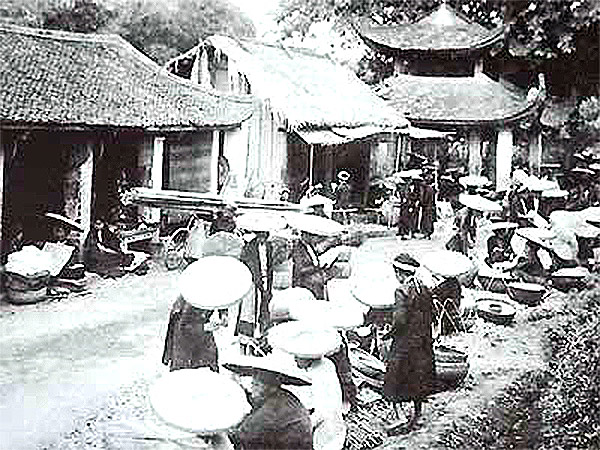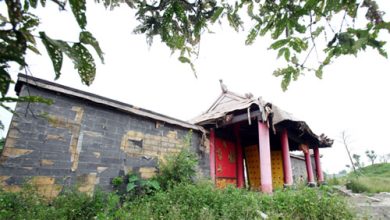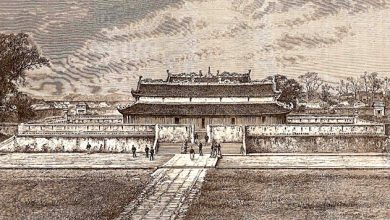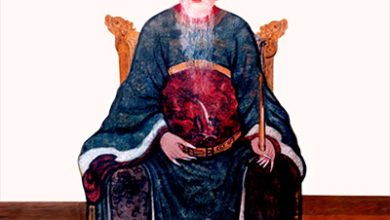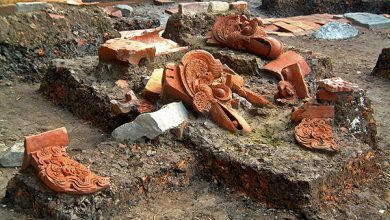36 old wards were planned from Early Le Dynasty
To go and see around Long Thanh (Imperial Citadel) together
It is incontrovertible that there are thirty-six handicraft wards.
This Vietnamese folk verse is familiar with most of Hanoians. However, scientists still can not agree with each other about what the 36 old wards are.
According to historic documents, in 1230, “Like the previous generation, 61 wards were rearranged on both sides of the imperial citadel”. In the language of feudalism, the previous kings of the same clan were often called the “Tien de” (Previous Emperor). Thus, the “previous emperor” was not a court of the same clan. The year of 1230 was under the reign of the first king of the Tran dynasty, Tran Thai Tong, so “previous emperor” was understood to be Ly Dynasty. Since then, it can be inferred that the planning of 61 wards originated from Ly Dynasty. However, in the ancient bibliography, no document clearly mentioned about the wards under Ly – Tran Dynasties.
To Early Le Dynasty, the number of wards in the Imperial Citadel was reduced to 36 wards belonging to two districts in Phung Thien province. The wards were described in “Dư địa chí” (Treatise on Geography) by Nguyen Trai, though not all 36 wards.
As described about 36 wards in “Dư địa chí”, it can be understand that at that time a ward was both an administrative unit equivalent to the rural commune and a handicraft ward where the residents of the same profession gathered. Specifically, Nguyen Trai recorded a number of famous handicraft wards such as Tang Kiem Ward producing palanquins, armors, hammocks, parasols; Yen Thai Ward (equivalent to the current Buoi area) producing paper; Thuy Chuong Ward (in Thuy Khue nowadays) and Nghi Tam Ward specializing in weaving fabric and silk; Ha Tan Ward near to Nhi River producing lime; Hang Dao Ward (now Hang Dao street) staining; Ta Nhat Ward (now at the end of Hue Street) specializing in fans; Duong Nhan Ward selling clothes; Thinh Quang Ward specializing in longane fruits.
In addition, the Complete History of Dai Viet also listed some other ancient wards such as: Dien Hung, An Hoa, Dong Ha, Thai Cuc, Bich Cau, Kim Co, Dong Tan, Vinh Xuong, Khuc Pho, Le Vien, Nhat Chieu, Phuc Co.
These are the wards recorded in the old bibliography. To find all 36 wards, scientists have to rely on various sources of documents and publicize the list of up to 49 wards in total. The 13 wards in excess may have been renamed, so ancient documents used different names in different periods of time. Because, scientists still can not verify the renamed wards, the exact list of 36 old wards are still not clear.
49 wards include Bao Thien, Bich Cau, Bo Cai, Cong Bo, Co Vu, Dien Hung, Dai Loi, Dong Cac, Dong Ha, Dong Tac, Dong Lac, Dong Xuan, Giai Tuan, Ha Khau, Hoe Nhai, Hong Mai, Khang Tho, Kim Co, Kim Hoa, Nhuoc Cong, Ong Mac, Phong Van, Phuc Co, Phuc Lam, Phuc Pho, Quan Tram, Ta Nhat, Tang Kiem, Thach Hao, Thach Khoi, Thai Cuc, Thinh Hao, Thinh Quang, Vinh Xuong, Vong Thi, Xa Dan, Yen Tho, Yen Xa, Bai An, Ho Khau, Nghi Tam, Nhat Chieu (Nhat Thieu), Quang Ba, Tay Ho, Thuy Chuong, Trich Sai, Vong Thi, Yen Hoa, Yen Thai.
However, scientists have agreed that the wards mainly concentrate in the east and south of the Imperial Citadel. Later, when Lord Trinh narrowed the Imperial Citadel, the western area had more wards that the common people call as the area of Thirteen camps.
The number of wards under Le Dynasty became less due to the policy of “encouraging the development of agriculture and limiting the development of commerce”. Therefore, the number of wards decreased; immigrants were prohibited to be settle in the Imperial Citadel; however, agriculture in the Citadel grew significantly. Kings under Le Dynasty laid down as a policy the development of state plantations. The Court divided plantations into the three levels, i.e. large, medium and small plantations; they also appointed chief and deputy chief mandarins directly under the court to take care of the plantations.
Specifying clearly and accurately all the 36 wards is difficult but necessary. Hopefully, there will be more scientific conferences to specify 36 wards under Le Dynasty, and further more, 61 wards under Ly – Tran Dynasties soon.

